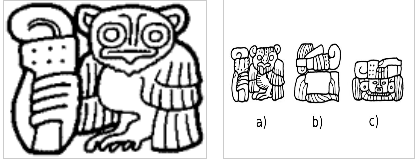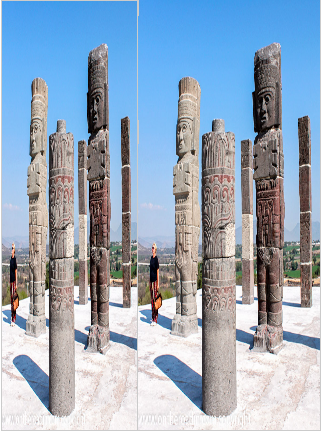THROWING ARROWS?
THROWING ARROWS?
By Mark F. Cheney
While reading through the Book of Mormon one day, I read the following descriptions of the battles and preparations for battle with the Lamanites contained in the forty-ninth chapter of Alma:
"And behold, the city (Ammoniah) had been rebuilt... and they had cast up dirt around about to shield them from the arrows and the stones of the Lamanites; for behold, they fought with stones and with arrows...
for behold the Nephites had dug up a ridge of earth round about them, which was so high that the Lamanites could not cast their stones and their arrows at them that they might take effect...
And thus were the Nephites prepared to destroy all such as should attempt to climb up to enter the fort...
by casting over stones and arrows at them.
Thus they were prepared... with their swords and their slings, to smite down all who should attempt to come into their place of security...and thus were they prepared to defend themselves against the Lamanites.
...they (the Lamanites) began to dig down their banks of earth that they might obtain a pass to their armies..., but behold, in these attempts they were swept off by the stones and arrows which were thrown at them." (See Alma 49:2, 4, 19-20, 22.)
I knew the Lamanites used arrows, but I always pictured them 'shooting' them out of bows, and I suppose they could have been said to "cast" them out of bows. I also knew that they had the brass plates to tell them about slings and stones in the story of David and Goliath, so clearly they too could have used slings. What I didn't know until I read about it in a newspaper article was that the ancient Americans (Aztecs, Maya, etc.) used a 'thrower' or an 'atlatl' to throw spears, darts and arrows, and possibly even stones.* A similar tool is used by Africans, near Egypt, and by the Australian aborigines (called a woomera), and even though it is a continent, Australia is also technically an "isle of the sea," and this 'spear thrower' is another commonality with descendants of Noah, Israel, and Jared or Lehi, as well. (See 2 Nephi 21:11 & Isaiah 11:11.)

Fig. 1 Drawing of spear thrower or Atlatl
According to stone carvings and glyphs depicted in Tikal and Uaxactun, a spear thrower, also known as an atlatl or atl- atl in the ancient Nahuatl language, was used by the ancient Maya in those areas exclusively as a hunting weapon for food animals until about 378 A.D. when they were used in a surprise tactical departure from the stylized, formal warfare of the day in a battle against Uaxactun (A FOREST OF KINGS, The Untold Story of the Ancient Maya, Schele, Linda & Freidel, David, p.152). It is thought by some that this tactic was borrowed from the people of Teotihuacan.

Fig. 2- Glyphs depicting 'atlatls'
In the ancient city of Tula, Mexico there are giant statues on top of one pyramidal structure known as the Temple of the Atlantes or Tlahuizcalpantecuhtli. These statues are called Atlantes because they show giant warriors, each armed with an atlatl on their left sides which may be a little difficult to see. I have seen these 12’+ statues up close and personal and believe me they are imposing, with their atlatls, caps, sashes, aprons and breastplates (See Fig. 3 below).

Fig.3 The Atlantes of Tula
Again, it might have been idiomatic in ancient times to speak of a bow 'throwing' an arrow, but knowing they commonly used spear throwers certainly gives us a simpler and more likely explanation. I am fairly sure that Joseph Smith, Jr. was not aware of this weapon being used extensively in Mesoamerica by the various tribes, when he so accurately used the verbs "cast" and "thrown." Another coincidence? I just don’t have that kind of faith in coincidences.
*ARIZONA REPUBLIC, December 11, 1995 (p. A13)


